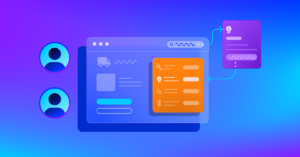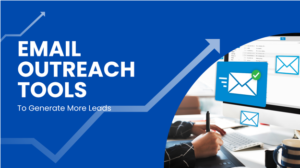
A personalized email will rise above the noise and engage the reader’s attention. That seems like a no-brainer. “To this day, no-one has really cracked the code,” John Hendricks told us. “You talk about personalization and it’s ‘Dear Kim’ or ‘Happy Wednesday.’”
Hendricks is the founder and CEO of Ergo, a content automation platform for email that is trying to solve the puzzle of how to personalize at scale. He has a long career in email. He co-founded Bigfoot, one of the first ESPs at the end of the 1990s (it was acquired by Epsilon). “My DNA has always been with email,” he said. “When I started this company it was to help advanced email marketers get a little deeper into doing cooler things.” That turned out to be a long, evolving process.
Containers, not content
“One of the big gaps we noticed, especially during the advent of marketing automation, is that everybody really shifted their focus to the containers — when you were going to send something out — and a lot of engineering, data, technology, operational resources and marketing bandwidth went into that, and the content wasn’t relevant.”
The results indicated that this was a misbalance. “You have this over-engineered infrastructure and your opt-outs are going up, people are tuning out, they’re giving ghost email addresses,” said Hendricks. “The blinding flash of the obvious to us was that no one was paying attention to what goes inside those containers. That’s really the essence of what we do.”
Enterprise-level brands have hundreds of thousand or millions of customers, thousands or tens of thousands of content modules. Matching them at scale is the challenge.
“When you start to look at content automation you have people that are either putting logic around the content or logic around the customer,” said Hendricks. “The epiphany for us was how those two things interplay with one another.“
Get the daily newsletter digital marketers rely on.
Content modules and customer profiles
Ergo Content Automation Services, said Hendricks, can ingest any piece of clients’ information through CSV files, APIs, or just html, and render it as a piece of content. It will take the data and turn it into a content module. “Those modules sit in a customer-level, pretty vast library, that then gets targeted based on anything that we or the client notices about the customer. We get signals, they get modeled, and that becomes targeting logic, and that becomes a very virtuous cycle.” Machine learning means that the more the algorithms do this, the smarter they get. “The algorithms typically are optimized for click engagement,” said Hendricks.
Is this really operating at an individual, one-to-one level? “It’s all really around the notion of next-best-message, next-best-content,” Hendricks explained. “For a given piece of content you may have five cohorts or life-stages for a customer and let’s say, maybe, seven competing topics you want to talk to them about. Of all the things we could say, what is the customer most primed for?”
Email marketing expert Ryan Phelan emphasized the enormous challenges in what Ergo is seeking to do. “I have to tell the algorithm what it means to browse a page or show intent. This process is incredibly intensive and particular to a company and their target market and customer archetype.” He also queried whether optimizing for clicks is enough, suggesting that identifying item- or category-specific intent for purchase would be more valuable.
Read next: Don’t let innovation overcome email common sense
The modern newsletter
While Ergo Content Automation is agnostic to type of email, Hendricks told us that its main focus is on email newsletters. “We do everything but we’re really trying to zero in on the idea of a modern newsletter,” he said. “This works well for any recurring program — you wouldn’t do it for a one-off, but you shouldn’t be doing a one-off email in the 21st century anyway. Either fixed deployment, like a newsletter that goes out every Monday, or every first day of the month, or any structured cadence, it works.”
Ergo recently announced the launch of Content Automation Services on the Salesforce AppExchange. “Salesforce does many things well and they’re the gold standard,” Hendricks said. “But Forrester, in their most recent wave, cited them for not having the most robust dynamic content; that was a shortfall for advanced marketers. We saw a pretty big opportunity to bring something to their world.”
At the end of the day, brands are going to say something to their customers via email. “What we’re saying is, bubble up the most relevant content that you can conceive of, and that’s what you should be talking to them about.”


![HubSpot's 2025 State of Blogging Report [Data from 500+ Marketers]](https://www.liveseo.com/wp-content/uploads/2025/02/HubSpots-2025-State-of-Blogging-Report-Data-from-500-Marketers.webp-300x300.webp)


